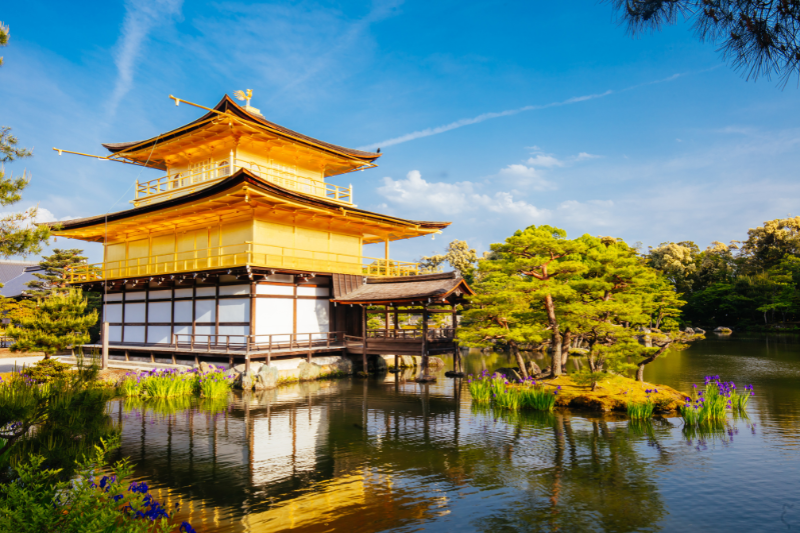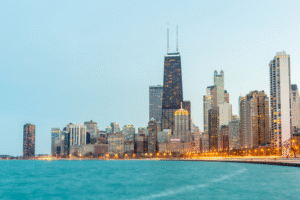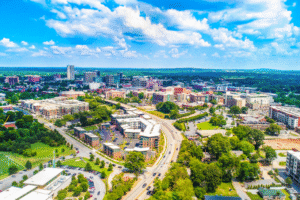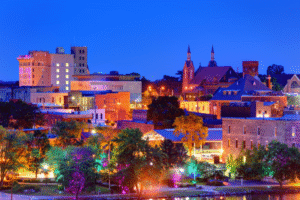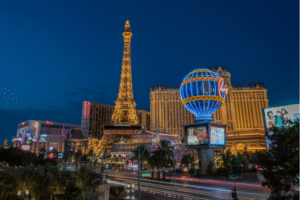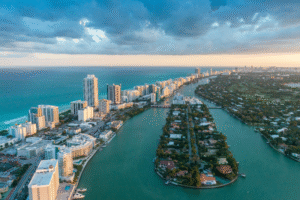In a world racing toward the future, Kyoto stands still—gracefully. Once the imperial capital of Japan for over a thousand years, Kyoto is where the soul of traditional Japan continues to breathe. With over 2,000 temples, silent bamboo groves, intricate tea ceremonies, and geishas gliding through alleyways, Kyoto is not just a destination. It’s a sacred pause in time. To walk its streets is to fall into a dream that fuses serenity, spirituality, and beauty.
Let’s wander through Kyoto—not just as tourists, but as travelers seeking the soul of Japan.
Day 1: The Temples and Tranquility of Eastern Kyoto
Begin your journey in Higashiyama, the eastern district of Kyoto where some of the city’s most revered temples rest in the embrace of wooded hills.
Kiyomizu-dera Temple
Start early at Kiyomizu-dera, one of Kyoto’s most iconic temples. Built without a single nail, the temple’s wooden terrace juts out over a hillside offering sweeping views of cherry blossoms in spring or blazing maple trees in autumn. Make a wish at the Otowa Waterfall, where three streams offer health, love, and academic success.
Sannenzaka and Ninenzaka
Stroll down the preserved streets of Sannenzaka and Ninenzaka, two stone-paved pedestrian lanes lined with traditional wooden houses, tea shops, and craft boutiques. Try a matcha soft-serve or pick up a hand-painted fan. These quiet alleys have remained largely unchanged for centuries.
Kodaiji and Maruyama Park
Next, visit Kodaiji Temple, surrounded by zen gardens, bamboo groves, and the occasional monk in meditation. Then wander into Maruyama Park, a perfect place to rest under cherry trees or admire the famed weeping sakura during spring.
Evening in Gion
As dusk falls, head to Gion, Kyoto’s geisha district. The narrow streets of Hanami-koji glow with paper lanterns. You may catch a fleeting glimpse of a maiko (apprentice geisha) on her way to an evening appointment.
For dinner, book a seat at Gion Karyo or Yasaka Endo, offering seasonal kaiseki meals in elegant tatami rooms. Kaiseki isn’t just dining—it’s culinary art, with every dish reflecting harmony with nature.
Day 2: Northern Kyoto – Arashiyama, Bamboo, and Zen
The second day takes you to the northern and western parts of the city, where mountains, rivers, and moss gardens add a mystical air to your journey.
Arashiyama Bamboo Grove
Start early in Arashiyama, before the crowds. Walk through the bamboo grove, where towering stalks sway and creak in the breeze, casting moving shadows that feel like a meditation in motion. This forest is one of Japan’s most photographed spots, but in person, it’s even more magical.
Tenryu-ji Temple
Just outside the grove is Tenryu-ji, a UNESCO World Heritage Site with a stunning zen garden designed to align with the surrounding mountains. Sit on the temple’s wooden deck and take in the pond, stones, and trees arranged in perfect harmony.
Togetsukyo Bridge and Riverboats
Walk across Togetsukyo Bridge, a beautiful span over the Katsura River, then consider renting a rowboat or hopping aboard a scenic river cruise. If you’re here in autumn, the reflection of fiery leaves on the water is unforgettable.
Lunch at a Riverside Ryotei
Enjoy a riverside lunch at a ryotei (traditional restaurant). Try yudofu (tofu hot pot), a specialty of Kyoto monks, in a place like Shoraian, hidden in the hills.
Ryoan-ji and the Art of Nothingness
In the afternoon, visit Ryoan-ji, home to Japan’s most famous rock garden. Fifteen stones placed on raked gravel inspire contemplation. The garden is designed so you can never see all the stones at once from a single angle—an intentional metaphor about the limits of perception.
Golden Hour at Kinkaku-ji
Close the day with Kinkaku-ji, the Golden Pavilion. This Zen temple, covered entirely in gold leaf, glows brilliantly at sunset as it reflects in a still pond. It’s a vision so perfect it hardly feels real.
Day 3: Tea, Tradition, and Hidden Corners
Use your final day to dive into Kyoto’s intangible heritage—its art of living, its rituals, and the gentle philosophy that underpins daily life.
Morning Tea Ceremony
Begin your day with a tea ceremony in a local teahouse. Kyoto is the birthplace of the Urasenke School of tea, and you can join a session that guides you through every precise, deliberate movement: bowing, cleansing, whisking. It’s a calming ritual that teaches patience and presence.
Philosopher’s Path
From there, walk the Philosopher’s Path, a cherry tree-lined canal once used by Kyoto University professors for meditative strolls. Along the way, you’ll find small shrines and artisan shops tucked between homes. The walk leads to Ginkaku-ji, the Silver Pavilion, which despite its name, is not silver at all—but serene and subdued, reflecting the wabi-sabi aesthetic of beauty in imperfection.
Lunch at Nishiki Market
Head back toward central Kyoto for lunch at Nishiki Market, known as “Kyoto’s Kitchen.” This vibrant arcade features stalls selling everything from grilled mochi skewers to yuba (tofu skin), pickled vegetables, and even matcha beer. Try a bit of everything—it’s a food lover’s paradise.
Afternoon at Fushimi Inari Shrine
No visit to Kyoto is complete without climbing through the thousands of vermilion torii gates of Fushimi Inari Taisha. Dedicated to the Shinto god of rice and prosperity, the path stretches into the wooded hills for several kilometers. The further you walk, the quieter it becomes. By the time you reach the top, you’ll feel like you’ve walked into another realm entirely.
Evening Ryokan Experience
For your final evening, check into a ryokan, a traditional Japanese inn. Dress in a yukata robe, soak in an onsen bath, and enjoy a multi-course kaiseki dinner served in your room. Ryokans like Hiiragiya, Tawaraya, or Gion Hatanaka offer luxurious but deeply traditional experiences that embody omotenashi—Japanese hospitality at its finest.
Tips for Kyoto Travelers
- Move slowly. Kyoto is best savored, not rushed.
- Respect sacred spaces. Temples are not just tourist sites—they’re active places of worship.
- Use public transit and IC cards like Suica or ICOCA for easy travel.
- Visit in shoulder seasons (spring and autumn) for the best weather and colors.
- Learn a few Japanese phrases. Even “Arigatou” (thank you) goes a long way.
Final Thoughts: The Soul of Kyoto
Kyoto isn’t loud. It doesn’t boast. It doesn’t need to. Its beauty is in the detail—the curve of a temple roof, the rustle of bamboo, the scent of incense in a shaded shrine. In Kyoto, time doesn’t move forward. It deepens.
To be lost in Kyoto is to be found in something ancient, timeless, and quietly profound.

